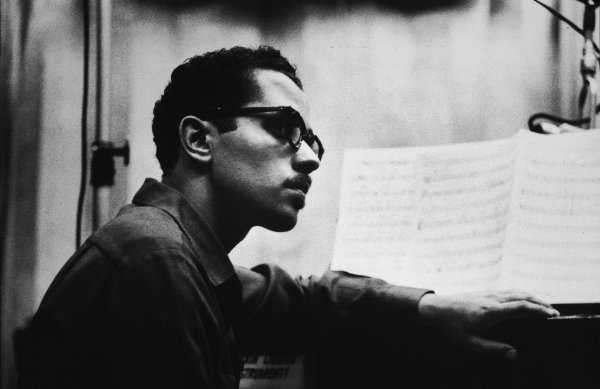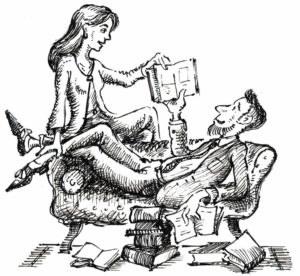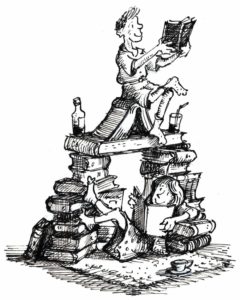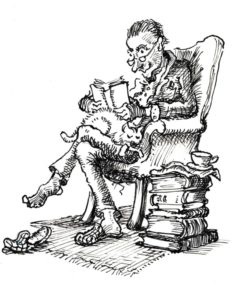“Son, You Hot!” Hampton Hawes & the Fire Inside
 HAMPTON HAWES (1928-1977) was one of the greatest jazz bebop pianists. But at the summit of his career, celebrated as New Star of the Year by Down Beat magazine in 1956, he had already a drug addiction that would lead to arrest and imprisonment. A career that had blossomed early with the greatest players of his day was knocked off its rails and, even though President Kennedy was to grant an executive pardon in 1963, was never to recover. In eloquent and humourous tone, Hawes tells of a life of suffering and redemption that reads like an improbably fast-paced and demotic novel. Raise Up Off Me, published in 1974, remains one of the most enduring and best first-hand accounts of the jazz life ever written.
HAMPTON HAWES (1928-1977) was one of the greatest jazz bebop pianists. But at the summit of his career, celebrated as New Star of the Year by Down Beat magazine in 1956, he had already a drug addiction that would lead to arrest and imprisonment. A career that had blossomed early with the greatest players of his day was knocked off its rails and, even though President Kennedy was to grant an executive pardon in 1963, was never to recover. In eloquent and humourous tone, Hawes tells of a life of suffering and redemption that reads like an improbably fast-paced and demotic novel. Raise Up Off Me, published in 1974, remains one of the most enduring and best first-hand accounts of the jazz life ever written.
Hampton Hawes cut his musical teeth in the bebop stampede on the West Coast, learning his craft in the clubs around LA’s Central Avenue, even playing alongside Parker in a group led by Howard McGhee in 1947. Full of promise and aspiration, he was a jewel in the Californian crown, but commercially the 1950s were to herald a false dawn for Hawes. Wider recognition came only in 1955, held back partly through his own reluctance to move centre-stage, and then his disastrous call-up for national service. A visit to Minton’s Playhouse in New York during 1947 had left Hawes feeling musically inhibited, and concluding that he “wasn’t quite ready… no point in selling tickets if you don’t have a show,” he joined Wild Bill Moore’s band for a spell on the road. Returning to Los Angeles he plied his trade along Central Avenue, and with Wardell Gray, Dexter Gordon, Teddy Edwards and others forged an impressive local reputation. Lester Koenig resolved to sign Hawes to Contemporary Records after hearing him first in 1953 in a group led by Shorty Rogers, and, following his tempestuous spell in the army, a series of six albums recorded in 1955 and 1956 formed the backbone of critical acclaim that put him on the national jazz map. He scored highly in successive magazine polls until 1958, but behind the scenes his personal life was in free fall as drug use cast its shadow, and a narcotics charge in November 1958 – albeit unjust in this instance – took Hawes to prison. Kennedy granted him a presidential pardon that released him mid-sentence in 1963, but his golden years had passed. He remained on the West Coast, clean and, if not financially replete, in occasional demand locally and active at a time when piano jazz was in its heyday. There were opportunities to record, often more readily forthcoming on his occasional forays abroad, but few highlights: the dictates of fashion and his frequent inappropriate attempts to track them offer feeble documentation to his abilities. Hawes died of a stroke in 1977 aged just forty-eight.
“I invented playing the piano for myself because I had to …don’t nobody else play like me. Because how can somebody play like me when they didn’t go to my school? I’m the only one that went to my school, ’cause I invented the school. I’m the only pupil, teacher and everything.”
Hawes was born in November 1928 with six fingers on each hand, corrected surgically after three days. Not all aspects of his life could be so conveniently clipped and his childhood reveals traits that were to surface throughout his career: scepticism, keen social observation and an unforgiving individualism, euphemisms perhaps for disdain, a suppressed rancour and downright disobedience. His father was a Presbyterian minister in the infamous Watts quarter of Los Angeles. The ghetto culture Hampton describes in his book seems to have framed the young man’s view of his father’s church, whose members were “too scared to move past the middle of the bus.” The church as social narcotic offered safety from the real world, but at a price: “I’ve never seen so many people… messed up, and disillusioned…” he wrote, and if Hampton was at odds with his father’s inward vision of the world, so too his father was unable to bless the music and lifestyle that his son was to adopt. For the Reverend Hawes, jazz was an exotic dish served in areas of ill repute; for Hampton, the jungle music sounded a clarion call to freedom and his ambitions and endeavours would go hand in hand with this “heavy sin.” Hawes cites George Washington Carver rather than Duke Ellington as a hero best served to represent social aspiration for the black community centred on 35th and Budlong, his father’s parish. The estimable George Washington Carver (who eschewed his own musical development to pursue agriculture and rural economic improvement) and the elegant Ellington (who eschewed his formal music lessons to sneak in to Frank Holliday’s poolroom) are dichotomous heroes and represent the polar positions of father and son. It would appear to have been an uneasy filial relationship with little emotional engagement and no musical encouragement. “I think I must have first turned to the piano out of boredom and loneliness,” he wrote. Certainly it seems odd that whilst his elder sister was tutored seriously in the classics, Hawes, who as an infant sitting on his pianist mother’s lap had shown a precocious ear for music, never had formal music lessons. He was the youngest child (of seven) and of course the money may have run out; but even in later years his parents neither heard him play nor, so Hawes claimed, listened to his recordings – although they did frame his album covers.
THE INFLUENCE OF PARKER
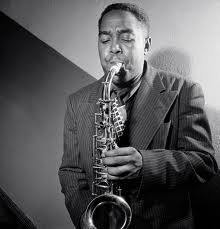 It was Earl Hines’ rendition of Boogie-Woogie on St. Louis Blues that Hampton encountered first on his road to Damascus, and his youthful energies were to be devoted in turn to the boogie-woogie of Meade Lux Lewis, the stride patterns of James P. Johnson, and the sophisticated swing of Nat Cole and Teddy Wilson; Waller and Tatum, too, featured in his listening. Having courted his mother’s sympathy, Hampton was excused church attendance when nine and chose instead to indulge in clandestine (and forbidden) boogie-woogie recitals at home. With his school friend Sonny Criss, Hawes formed a band when in his teens and started to play professionally with saxophonist Jay McNeely. He mixed with those who comprised a desultory music class around Lloyd Reese, a former member of Les Hite’s Orchestra whose rehearsal band schooled many a West Coast musician from Buddy Collette to Charles Mingus. McNeely spoke of Hawes at that time as sounding like Nat Cole, but his musical direction changed when Eric Dolphy, another childhood friend, introduced him to the Savoy recordings of Gillespie and Parker, whom he heard in person at Billy Berg’s Hollywood club in 1945. Hawes writes of the cataclysmic effect that Parker in particular was to have on musicians who heard him and how fantastically novel he would have sounded at that time: his playing could be “dissonant and harsh on the ears if you weren’t accustomed to the sound.” Some were unable to comprehend the music and shied away; others, like McNeely, may have thought this was a musical fad to be exploited but soon fell by the wayside, unable to come to terms with bebop’s inherent complexity.
It was Earl Hines’ rendition of Boogie-Woogie on St. Louis Blues that Hampton encountered first on his road to Damascus, and his youthful energies were to be devoted in turn to the boogie-woogie of Meade Lux Lewis, the stride patterns of James P. Johnson, and the sophisticated swing of Nat Cole and Teddy Wilson; Waller and Tatum, too, featured in his listening. Having courted his mother’s sympathy, Hampton was excused church attendance when nine and chose instead to indulge in clandestine (and forbidden) boogie-woogie recitals at home. With his school friend Sonny Criss, Hawes formed a band when in his teens and started to play professionally with saxophonist Jay McNeely. He mixed with those who comprised a desultory music class around Lloyd Reese, a former member of Les Hite’s Orchestra whose rehearsal band schooled many a West Coast musician from Buddy Collette to Charles Mingus. McNeely spoke of Hawes at that time as sounding like Nat Cole, but his musical direction changed when Eric Dolphy, another childhood friend, introduced him to the Savoy recordings of Gillespie and Parker, whom he heard in person at Billy Berg’s Hollywood club in 1945. Hawes writes of the cataclysmic effect that Parker in particular was to have on musicians who heard him and how fantastically novel he would have sounded at that time: his playing could be “dissonant and harsh on the ears if you weren’t accustomed to the sound.” Some were unable to comprehend the music and shied away; others, like McNeely, may have thought this was a musical fad to be exploited but soon fell by the wayside, unable to come to terms with bebop’s inherent complexity.
“…I didn’t meet God, or a facsimile of him, till years later at the Hi-De-Ho Club at 50th and Western, playing alto in the Howard McGhee band.”
But it was more than simply chasing Parker’s musical logic, however compelling that may have been; after all Tatum was exploring the chord structures that grounded bebop a full decade before Parker and Gillespie recorded first together. And it was more than a reaction to the overblown and restrictive big band arrangements, which would have meant little to young and inexperienced musical hopefuls. This was a primitive response, artistically, socially, and above all emotionally. To Hawes, Parker’s music spoke volumes; if flattened fifths and chord extensions were the dialect, its vocabulary was ambition, the same ambition that drove dissatisfied members of the regimented swing bands to embrace this new musical etiquette. Unlike his parents, who “didn’t understand where I was coming from,” Hampton was looking to expand his horizon, to make his place in the world at large and not retreat inwards in to the protective blanket that, for his family at least, the Church provided. Hawes termed it “rebellion,” which he equated with survival; the alternative was to “get your hair gassed, brothers, put on your bow ties and a funny smile and play pretty for the rich white folks.” Hawes’ self-portrait can at times be awkward at the edges and too self-consciously aware of belonging to a downtrodden minority, however true; so too the self-indulgent claim of belonging to the first generation of rebellion grates as false and familiar. But Hawes is able to articulate what many would have felt, that Parker had shown them the way to the Promised Land, that, in short, he had “fucked up all our minds.”
BEBOP AND THE PIANO
Hawes spoke often of the impact Parker had on his playing: he “influenced me more than anybody, even more than piano players.” Parker’s unfettered imagination, drive, invention, technical brilliance and mythic God-like status engulfed those around him and were not restricted to fellow saxophonists: he came not only to dominate the musical world he inhabited but also to set its parameters. The best players, of course, found their own voice; but one of the interesting features of the 1940s’ jazz revolution was the manner in which pianists responded to the challenges of the bebop style. It was as if Parker had disrupted the natural evolution of jazz piano and encouraged a performance that was, in fact, against the natural grain of some of its practitioners, even, indeed, against the grain of the instrument itself. Central to this was the spell cast on contemporary and successive pianists by Bud Powell, and it may be that many found it easier to assimilate his stylistic blueprint than follow their own intuition. Elmo Hope, Walter Bishop and Duke Jordan, pianists who helped to lay bebop’s bedrock, all came from New York and shared similar cultural and musical influences (so too Monk, although his take on bebop was more individual); they shared, too, an authentic and distinctive approach to the piano with Powell as their high priest. Not so Hawes, whose early years in California spent apart from the bebop hub that was New York proffered a sound schooling and an independent ear: the language of Parker and Powell had been grafted on to his own rootstock but had not swamped it.
“I couldn’t believe what he was doing, how anyone could so totally block out everything extraneous, light a fire that hot inside him and constantly feed on that fire.”
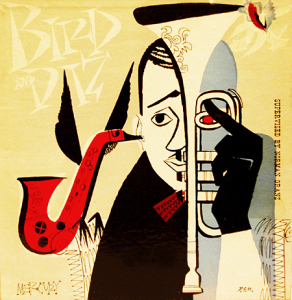 As bebop and its vocabulary expanded, and genuine two-handed pianists like Bill Evans and Wynton Kelly came to the fore, many of bop’s core disciples who were able once to find work and an audience on 52nd Street in the late 1940s found their limited piano language exposed. Those who were able enough returned to a more natural and graceful keyboard language. The elegant Al Haig possessed a tidy and urbane style, and the recordings he made in the 1950s suggest that, despite his success with Parker in the previous decade, he had aped Powell for a brief period rather than use his example as a springboard for his own development: he was never a cloned bop disciple and his playing came to resemble an adventurous swing style coloured by bop attitude. The enigmatic Dodo Marmarosa also was too romantic and episodic to have drunk from the same well as Powell and was closer in his musical stance to Teddy Wilson. Both Haig and Marmarosa, highly skilled pianists both, were never at total ease within the bop idiom, I would suggest. In contrast, Hawes never felt constrained by its limits and its language was never foreign to him; he was a genuine convert, but if Parker’s gospel was its Authorized Version, Hawes possessed the scope and brio to craft his own revision.
As bebop and its vocabulary expanded, and genuine two-handed pianists like Bill Evans and Wynton Kelly came to the fore, many of bop’s core disciples who were able once to find work and an audience on 52nd Street in the late 1940s found their limited piano language exposed. Those who were able enough returned to a more natural and graceful keyboard language. The elegant Al Haig possessed a tidy and urbane style, and the recordings he made in the 1950s suggest that, despite his success with Parker in the previous decade, he had aped Powell for a brief period rather than use his example as a springboard for his own development: he was never a cloned bop disciple and his playing came to resemble an adventurous swing style coloured by bop attitude. The enigmatic Dodo Marmarosa also was too romantic and episodic to have drunk from the same well as Powell and was closer in his musical stance to Teddy Wilson. Both Haig and Marmarosa, highly skilled pianists both, were never at total ease within the bop idiom, I would suggest. In contrast, Hawes never felt constrained by its limits and its language was never foreign to him; he was a genuine convert, but if Parker’s gospel was its Authorized Version, Hawes possessed the scope and brio to craft his own revision.
“If our music wasn’t dead it was at best a sleeping giant. Many of the brothers who had been the keepers of the flame, the kings of the forties and fifties – all the work they wanted, playing on each other’s gigs and recording dates, the young cats all looking up to them – were bitter, brooding about the past green times, hating the kids for taking the bread from their mouths and stealing their glory.”
THE NARCOTIC SHIBBOLETH
Bebop was essentially a working language, an accidental meeting of forward thinking minds and never a cohesively argued set of musical rules. One of its salient features was the bunker mentality exhibited by its participants, who now played music for its own sake and not as mere entertainment, the sign of a maturing art form. Whilst in its prototypic stage at the after-hours jam sessions at Minton’s or Monroe’s Uptown House, those on the ‘inside’ looked to test or even exclude those on the ‘outside’ with fast tempi, unusual keys and confusing chord changes. The music’s introverted disposition spilled over into its social mores and this in part may explain the attraction of drugs to its fraternity, a bonding experience that, like musical complexity, served to embolden its brethren. Hawes may have been disingenuous rather than informative when he attributes their prevalence to racial oppression, and his own drug use was surely not just another layer of social deviancy or the result of a weak and misguided personality (although it may have been this as well for the youthful Hawes lacked self-belief, was shy and introverted, “until,” noted drummer Roy Porter, “he became strung out”): it was an assertion of the ambition and bebop recusancy that had framed his life.
Hawes writes of a musical motif (the opening three notes of Parker’s Mood) that, if whistled, “signified you were using but cool.” Hampton’s apparent casual attitude to drug use belied its affinity with musical congeniality, for narcotics had become the boppist shibboleth (“It seems like you either have to be an Uncle Tom or a drug addict to make it in jazz,” was how Herbie Nichols put it) with tragic consequences: addiction was like a heavy artillery that lay waste to soldiers on the battlefield. Aware of Parker’s reputation, he sensed that “aside from his music it wasn’t going to do me any good to be spending a lot of time around Bird,” which is, of course, just what he did; as Hawes’ friend and great admirer Oscar Peterson lamented, one day there was “an extra glint to those bright eyes of his.” “Son, you hot!” was Tatum’s endorsement when they met briefly; but with deteriorating health and a drug-induced irresponsibility working against him, Hawes was physically and mentally never in a position to capitalise on his stock.
THE RECORDINGS
The first recordings Hawes made for Lester Koenig announced a pianist firmly entrenched in the bebop idiom but with much to add to its execution. His forceful two-handed style – crisp right hand lines delivered with deft and well-timed execution, left-hand chords and offbeat accents driving the music forward – kicked like a stallion. Variation and subtlety offered relief to his improvisation: block chord passages, occasional hints of a Garneresque left-hand (although without Garner’s effortless and conflicting right-hand rubato), right-hand octaves highlighting focal points or notes, phrases closed with ascending thirds (one of his trademarks), were some of the stylish tics that comprised his varied arsenal.
Two trio albums recorded in 1955 contain typical Hawes repertoire: standard tunes, bop classics and a smattering of blues, mostly self-composed. Clearly Hawes is indebted to Bud Powell, and his long phrasing and sweeping solo lines that cut across bar measures are vintage bebop piano. Added to Powell’s dynamism is a more lyrical, even soulful, expression, and it easy to see why critic John Mehegan, if incorrectly, classed Hawes as belonging to the “rhythmic (funky) school of jazz piano” derived from Powell and expressed best at the time by Horace Silver [Down Beat, July 1957]. Imagination and care is given to head arrangements, with use of dynamics and counterpoint, and Hawes’ telling ability to compile an album and arrange his material with cohesive solidity is evident. Too many albums at this time were patched together seemingly in haphazard fashion, the result of hurried or ill-conceived overnight sessions with a “you hum it, I’ll play it” attitude. Hawes clearly had an ear for posterity and, as Koenig was well known for giving his artists a free hand, must have possessed for himself an intuitive grasp in crafting fully rounded, coherent architectural statements. Compared to his playing from earlier years – material gleaned from live air shots or club dates made available more recently – his style had developed and grown more confident, but he remained faithful to the original bop gospel and impervious to the more refined strands of West Coast piano jazz as represented by Brubeck or the classically briefed Andre Previn (who in his own bestselling albums of the mid- and late 1950s came to sound remarkably like Hawes), or even the burgeoning hard bop sound. After all Hawes had been cocooned for the previous two years in Japan – mostly in a military stockade! – and had been sheltered from the more current sounds disseminating from the United States.
In one evening in November 1956, the three albums that comprised The All Night Sessions were recorded, and many consider this trilogy to be Hampton’s finest discographic hour; Koenig, anxious to highlight the session’s spontaneous feel, pressed the albums in recorded order. Hawes was at this point a young man in a hurry with a style that was still evolving, and recordings from 1958 illustrate a further maturity with a softer edge. “I’ve learned new ways of voicing the chords, making them prettier and more what I want to hear. I’m more relaxed and can take longer solos,” he had said in late 1957. Four! Was recorded in January 1958 and Hawes, thrown by guitarist Barney Kessel’s presence, is economical with his left-hand and there is a real tenderness and a telling lilt to his right-hand lines. This is a fine album although his playing loses a sense of its usual biting drama and confrontation, as both main soloists echo each other too closely, in both delivery and in sound. The Sermon, recorded in November 1958, is Hawes at his very finest. An album comprised entirely of gospel songs and spirituals – musical forms close emotionally to the blues and recalling his church background, their performance exposed his musical soul, and Hawes luxuriated in the repertoire’s simple structures and relatively unsophisticated harmonic modulations. This recording lay in the vaults at Contemporary unissued for nearly thirty years: perhaps Koenig saw no point in marketing an artist who was incarcerated in prison (this session was recorded just after Hawes had been arrested for drug offences and weeks before he was sentenced) or perhaps its easy mannered and uncluttered style was too reminiscent of the middle-of-the-road albums Oscar Peterson was apt to record occasionally for Norman Granz. His performance is pared down and more space complements his phrasing, which has shape, weight and definition, and there is improvisational ebb and flow rather than a tumultuous rush to reach the end of his musical line.
LATER YEARS
It would be incorrect to say that his later playing was not of a high standard or even comparable to his glory years, simply that after his imprisonment Hawes had lost momentum and with it the sure and confident individuality that came from knowing his musical place in the world. “I do listen to other music,” he later told Lester Koenig in 1975. “There’s more good musicians now than there was when I was coming up. So, I think that I listen to those guys, you know, the same way I listen to everybody; but I don’t listen to them like I used to listen to Bird, you know, because I don’t want to hear anything that I like that might seep in.” But in fact the record belies his protestation, and his playing from the 1960s until his death is marked by a struggle to stand on his own feet. Hither and thither his ear soaked up new sounds, an aural meandering that resulted in a stylistic coat of many colours.
The sad truth is that from 1963 Hawes was no longer the right man in the right place, and his lack of musical training, which had hitherto given him insight and his own voice, had passed from virtue to handicap. He had never read music and everything he had played was learnt by ear. A lack of reading ability excluded him from session work and its financial rewards; this may not have mattered and in any case may have led him down a musical byway, but this same skill may have opened doors that otherwise were closed to Hawes. He made very little headway with composition and appeared indifferent to the craft: the occasional blues was his lot, and none of these have become part of the standard jazz canon. More importantly, he played rarely in groups – although whenever he had recorded as part of an ensemble (with Curtis Fuller, for example, on the album With French Horns, 1957) or when challenged (with Charles Mingus on Mingus Three, 1957), he played with appropriate sensitivity and skill. Yet in interviews he gave there are hints that he felt exposed and insecure in the musical company of others, and lamented his inability to read and notate scores. Whilst it is true that his variety of style, technique and fluent improvisation were gifts that lent themselves to the piano trio format, he did not possess the explosive exhilaration of Peterson, the lyrical intensity of Bill Evans or the trademark individualism of Garner or Jamal to sustain the long career haul. Certainly his playing never became vacuous like that of Phineas Newborn’s, but there is no doubt that his career faltered in its lopsided approach. As some of his contemporaries moved centre-stage, progressed musically and even flirted with aspects of the avant-garde and the ‘Third Stream’, Hawes remained in the wings. His lines were well rehearsed and brilliant, but there remained a palpable sense of striving for that next phase of his development. That development never came, and Hawes was left clutching at piecemeal work, some recognition overseas, an inauspicious outing with strings and ill-advised dabbling with funk rhythm. There is a passage of telling regret in Raise Up Off Me. Playing solo piano in a cocktail bar and hearing that Miles Davis and his group were opening in a nearby club, Hawes attended the opening night and sat in for a while with the quintet: “they had made me feel so good again that I just needed a little taste.” It is not just that true jazz work was hard to find, it is also that Hawes had lost control of his destiny and that his hour had gone.
“I read that Miles was coming… I went down there opening night; Miles looked at my sharp suit and said, “Where you playin’?” figuring at 9:30 I must be going to work instead of coming. I sat down to listen. I hadn’t played with a group for so long and the music sounded so good to me, I wound up in the middle of a tune with Miles’ band wondering, what the fuck am I doing up here. Finished the tune and afterwards asked Miles, “Was it cool?” He said, “You’re a crazy motherfucker. It was beautiful.” He and Herbie Hancock, the pianist, understood they had made me feel so good again that I just needed a little taste.”
Throughout the autobiography there is an impression that Hawes was but an observer of his own life rather than its engine. An apparent fatalism that served to exorcise personal failings. So his childhood and musical development were lonely, drugs were therapeutic or a corrective to his the state of unjust world, military authority was partial and imposing, his drug bust was discriminatory, he became a prophet without honour in his own country. And yet at the same time the book is starkly honest. Dig deep and it tells of the realisation that in the end his progress was limited by his background and that his imagination was curtailed by experience, but at the same time it tells of how he strove to overcome both background and experience and remain true to his art.
“… I want to make music so beautiful it’s like hugging in the forest at night, rise to the occasion and maybe go right over it ’cause my energy’s burning – and I can make it with nothing but my brains and my hands and my heart. And when that stops beating I’ll know I pressed it to the limit and be ready to go down happy.”
With a body of work released in the mid-1950s to great applause and having won the Down Beat New Star Award in 1956, Hawes’ musical trajectory should have shot higher. This period marked the summit of his career, the point at which his artistic development was able to reflect, and in turn affect, the developments in the wider jazz world around him. His stature as pianist has sometimes been overlooked and his role as memoirist has been seen even as paramount. This is to do him injustice. If technically accomplished, gifted and even individual, he was essentially derivative as a stylist and is now seen to be a footnote to the standard jazz history rather than as part of the main text. Yet at its height, his playing was a melee of passion, energy, swing, and the epitome of bebop excitement. He was perhaps the only pianist of the early 1950s to dovetail so authentically the inner dynamism and drive of Parker and Bud Powell with Oscar Peterson’s more accessible keyboard language. This may not be reason enough to promote him to the first rank, but he did play with an originality and substance not always forthcoming in his contemporaries. He remains the most brilliant example of post-Powell bebop piano.


